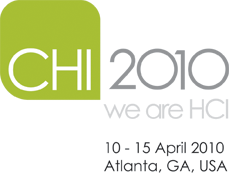CN27: Innovation Games® for User Research in an Agile Environment
Quick Facts
Time: Thursday, 15 April 2010, 14:30 to 16:00Units: 1
Organizers: Nancy Frishberg
Benefits
This course introduces participants to a group of activities that fit well in a user research program, as part of design research activities, and which also work within an agile development environment.Audience
This course describes a set of qualitative research methods that will be attractive to user researchers, customer satisfaction specialists, Chief Happiness Officers, marketing professionals, among others. People who participate on Agile teams and those who are considering making a change to Agile practices will enjoy learning new techniques that fit into an Agile framework. Designers, engineers, and others with limited research background are welcome to join in the fun.Origins
This course is adapted from a full-day (8 hour) tutorial given several times previously for UPA and for a local CHI chapter. Participatory sessions of individual games have been demonstrated to ISIS’s first sex::tech (2007), for GraceWorks (a job transition self-help organization associated with Grace Cathedral, San Francisco), at Stanford’s Business School course, “Customer Research for Effective Decision-Making”, among other venues.Features
A highly interactive session where participants will experience a playful research method, and interpret the activity into actionable results, such as reports to the client, or user stories and other artifacts aimed at an Agile team.
Participants in this course will:- Gain a new appreciation for the role of play and fun at work;
- Learn how to conduct group activities that yield actionable results quickly;
- Be introduced to one (1) playful technique in depth, and several more by brief description;
- Understand some dimensions of game play that will guide the choice of game in a particular setting;
- Recognize value and meaning in forms of expression, including and beyond speech and text
- Interpret participant contributions in forms that make sense within agile practices (design requirements, user stories, sketches, prototypes, etc.)



